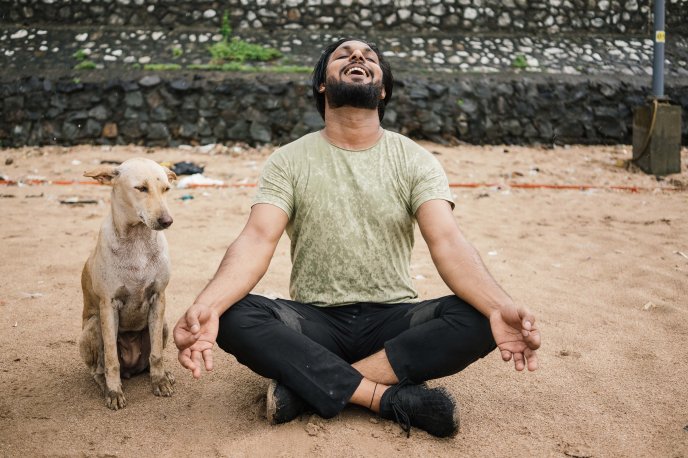Breathing comes so naturally and is so essential to the function of our bodies, that we do it without thinking. Yet when we’re stressed, it can become quick or shallow – or both. Taking time out from the external world, to go inwards, quiet the mind and ground yourself, can be a simple as noticing – or focusing on – the breath.
The magic of breath work

Breath work means becoming conscious of the breath, and controlling its flow to do good things for your physical and mental wellbeing. Even very simple breath work is effective for easing stress, boosting alertness and strengthening your immune system. Most breathing exercises can be done anywhere, at any time, whether at home or out in the world. It’s brilliant to repeat them at similar times once or even multiple times a day. Because repetition is the foundation of forming a habit.
Try and test
We encourage you to try all the techniques we’ve outlined here, to see which works best for you, and feels most comfortable. For those exercises that include counting, you can adjust the number of counts if what we’ve advised feels like too much – or too little. Discontinue the technique if you feel in any way uncomfortable.

Alternate-nostril breath (or Channel-cleaning breath)
How: A yogic breathing technique known as ‘nadi shodhana pranayama’ in Sanskrit, to do this, fold in the middle and first fingers of your right hand, leaving the ring finger, little finger and thumb extended. Exhale, then gently close your right nostril with your thumb, before inhaling evenly through the left to a count of four. Next, close off the left nostril with the two free fingers. Count to four with both nostrils closed, and then release the thumb and exhale through the right nostril to a count of four. Keeping your fingers where they are, count to four with empty lungs, then inhale for four through that right nostril and repeat the pattern until you’ve done both sides four times each. Then, let your hands come to your lap and breathe slowly with your eyes closed. Observe how your mind and body feel.
Benefits: Enhancing cardiovascular function, soothing anxiety, easing stress.
Box breath (or Square breath)
How: With relaxed shoulders, eyes closed and a comfortably elongated spine, inhale slowly to a count of four. Allow both belly and chest to expand as you do, but without filling them so much that it causes tension in your body. At the top, hold the breath for a count of four. Then, exhale evenly and smoothly for four, as the belly empties and the chest falls. When the lungs are empty, count again with the same tempo to four, before breathing in for four once again. Repeat this cycle four times, and then return the breath to normal and breathe a few times before opening your eyes.
Benefits: Creating calm, focus and clear-headedness; relieving stress; regulating the autonomic nervous system.
Lion’s breath (or Simhasana)
How: Sit cross-legged, with your spine straight but relaxed. Place your palms down and rest them on the knees, or have them face outwards, with the backs of the hands set against the knees. Open your fingers wide, so they’re splayed like claws. Inhale deeply through the nose, and as you do, open your eyes wide. As you exhale, open your mouth wide and stick your tongue out, extending its tip towards your chin – while doing so, make a loud, quick, roar-like ‘ha’ sound and look at the point between the eyebrows, or at the tip of your nose. ‘Roar’ in this way two or three times, before re-crossing your legs with the other leg in front.
Benefits: Blowing off steam; waking up the face and relieving tension both here and in the chest.
4-7-8- breath (or Relaxing breath)
How: Sit comfortably, whether on a chair or cross-legged on the floor, and close the eyes. Place the tip of your tongue on the ridge just behind your upper front teeth – and be sure to keep it there through the whole practice. Then, empty your lungs, before breathing in through the nose to a count of four. Hold the breath for a count of seven, before exhaling audibly – with some force – through pursed lips. This exhale should be done to a count of eight. Repeat the cycle three more times, so that you’ve done it for a total of four cycles. Try doing this twice a day, every day, and after a month, increasing the number of cycles you do in a sitting up to eight.
Benefits: Easing anxiety, aiding sleep, controlling anger-based responses.
